Digging through ‘things’ I have collected over the year, asking myself which should be thrown out because I have not touched or needed them in years, I ran into some papers that certainly meet the characteristic of not being touched, but which I nevertheless don’t want to toss out. Just scanning and keeping for later is certainly a way out of that dilemma, but with these artifacts, I want to go one step further and put it out on the web because I can imagine that there are others besides me who might enjoy this.
So, here it is…
The following advertisement appeared in several aviation publications in 1987
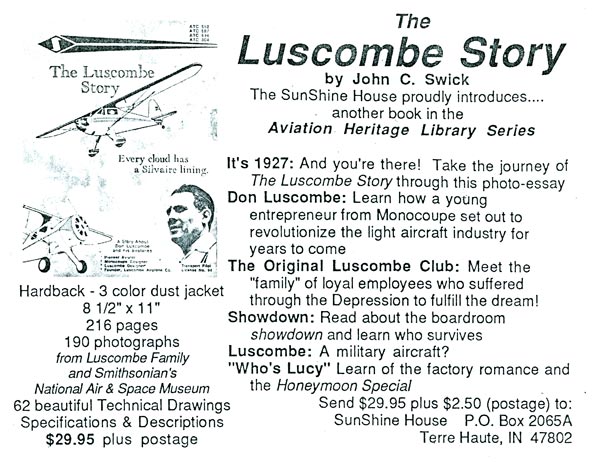
The only reason I have this ad is, that Lucy, mentioned in this ad, gave it to me personally. In other words, I can answer the question “Who’s Lucy?”
Together with this ad, Lucy also gave me an excerpt from the advertised book. These are the pages that I did not want to discard…
Not all of the dealings at Luscombe Airplane Corporation in 1939 were of a serious business nature. July saw the culmination in marriage of a romance that had started nearly a year before. Lucy Rago, a local girl from the West Trenton area, was an office girl hired in 1935. In September of 1938, a young male customer flew into West Trenton with his distributor to take delivery of a new “50” only to find that his plane was still under construction. Because he was low on money from the trip and couldn’t afford to just wait, Jerry Coigny was hired to work on his own airplane. The office area was off-limits to the factory floor staff, but Jerry was more than just an employee; he was a customer, thus allowed to wander through the office area at will. This afforded Jerry and Lucy much contact with one another; enough to fall in love during the two weeks Jerry worked on his aircraft.
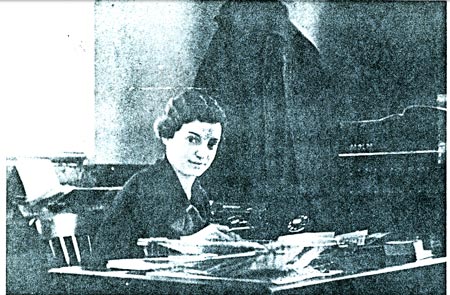
After Jerry left the West Trenton area, he and Lucy corresponded daily. As Jerry was racing and barnstorming in his little Luscombe, much of the news his letters contained concerned the performance of his airplane. When Lucy thought something pertinent to the
further development of Model 50s, she would carefully cover the personal messages with masking tape and take the letter to higher management. Almost before her back was turned to leave the room, the tape would be off and the personal sections read.
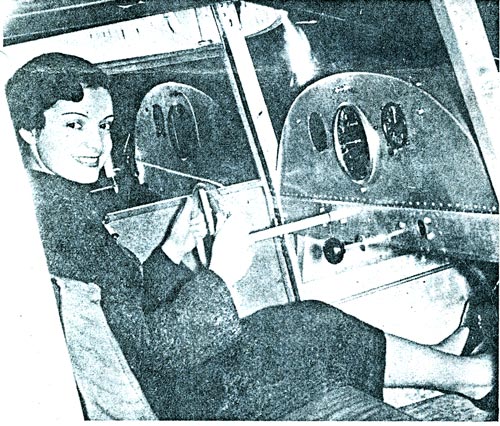
Occasionally, Jerry would write a letter to Don Luscombe himself, who at this time was still president, always adding, “Tell Lucy hello”. Don used copies of some of these letters in sales literature. Occasionally when a customer wrote the company concerning this literature, the P.S. “Who’s Lucy?” would be included.
The Christmas following their meeting, December 25, 1938, Keith Funk, another Luscombe
employee, knocked on the door of the Rago household bearing a gift. Jerry had sent Lucy’s Christmas present to the factory, an engagement ring. Lucy later said that the gift made Funk the “greatest Santa Claus in the world as far as I was concerned!”
More letters carried the young lovers through June when Jerry sent news of the sale of his first, well-used Luscombe. The official telegram arrived on June 9, 1939, Jerry Coigny’s deposit and order for a new Luscombe Model 8A was confirmed. The little plane became known as the “Honeymoon Special”, which was stamped on the firewall. When the order was written, Lucy was jestingly listed as extra equipment. After that, customers would jokingly request an “extra” like companion, wife, or girlfriend.
Jerry arrived on July 1, bearing gifts for Lucy’s family. Because of conflict between the families of the couple concerning their wedding ceremony, Jerry and Lucy decided to elope. The other girls at the office helped Lucy smuggle her personal belongings into the factory where they were stashed until the proper moment.
July 12 finally arrived. The little Luscombe 65 horsepower airplane was loaded with Lucy’s belongings and decorated with signs, crepe paper, and old shoes.
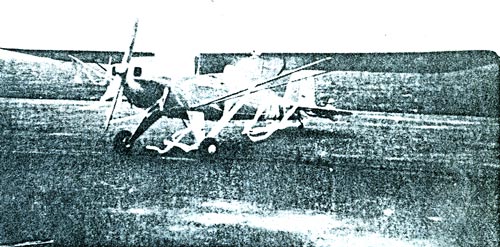
J. H. Torrens, current President of Luscombe, gave a farewell speech and presented the couple with a Lear Radio. Lucy’s co-workers provided her with the necessary “something old, something borrowed, something blue”, and off they flew.
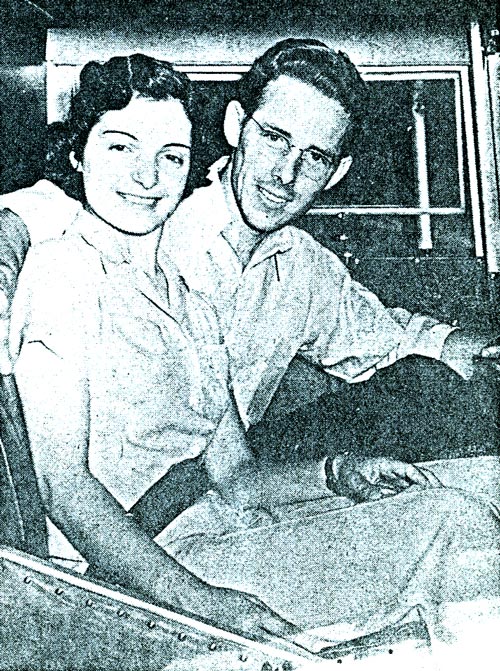
A short flight took them to Doylestown, Pennsylvania where they were married in a short civil ceremony. Another flight took them to Wings Field in Ambler, Pennsylvania where Don Luscombe and his wife picked them up and drove them to their estate at Gwynedd Valley. The honeymooners stayed the night with the Luscombes’ and left the next morning for Grants Pass, Oregon, where Jerry had established a fixed-base operation and flying school.
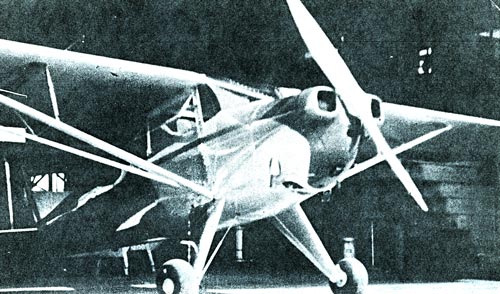
Thus far the story of Jerry and Lucy (all images from the Jerry and Lucy Coigny collection). Maybe the book is still available and if you are interested in the Luscombe story, try the address in the above ad.
Just as a little glance into the past, here are the prices and the equipment list for these aircraft types as in the story above. This was mailed out to dealers and prospective customers shortly after Lucy and Jerry got married:
FLY-AWAY FACTORY, TRENTON, NEW JERSEY
AUGUST 1, 1939
LUSCOMBE “50” (Continental A-50 Engine) — $1895.00
LUSCOMBE “65” (Continental A-65 Engine) — $1975.00
LUSCOMBE “65” SEAPLANE (F.A.w.) — $3170.00
STANDARD EQUIPMENT INCLUDES
- Wood Propeller
- Single Ignition Engine
- 17 1/2 Inch Tires
- Fully Enclosed Tunnel Type Cowling
- Carburetor Heater with Hot and Cold Air Control
- Two Full Size Doors
- Dual Controls (Stick)
- Oleo Landing Gear
- Altimeter
- Airspeed Indicator
- Tachometer
- Oil Pressure Gauge
- Oil Temperature Gauge
- Imitation Leather Upholstery (Seat Cushions)
- Pushout Window
- Individual Quick Fastening Safety Belts
- First Aid Kit
- Quart Pyrene Fire Extinguisher
- Logbooks
- Service Manual
- Five Cubic Foot Baggage Compartment
- Upholstery, in attractive leatherette, on both doors, with pocket in each door
- Upholstery in same material on forward cabin walls
- Rubber heel mats on cabin floor
- Door Stops
Now, you might wonder, how do I, your friendly author, fit into this story. Here is what happened:
A few years after the book in the above ad had been published I started my flight training. During a visit to a friend who had a little motel in Badger, close to the southern part of the Sequoia National Park, I met a local who took interest in me and my flying because he had been a pilot during the war. He took me on a visiting spree around the area to meet local pilots.
One of them had the most amazing private airstrip: Hangar on top of a hill, the short 1000 foot steep runway down the hill. Gravity helped to gain enough speed to get to minimum take-off speed at the bottom of the hill. On landing – the other way around – gravity helped again, this time to slow the plane touching down at the base of the hill, racing up the hill and coming to a stop in front of the hangar. Until now I have no idea what would happen if a plane would run out of momentum during the climb up the hill because the hill was definitely too steep for an airplane under propeller power only.
Another local pilot was Jerry Coigny – yes, the same as in the story above. He had a more traditional airstrip if you can call it that – It started at the edge of a bluff and ended in his backyard. The similarity was that again, independent of wind, you took off in the opposite direction as you landed. The backyard was just big enough to turn a small airplane around. No, not just one turn. You pulled into a tight 90 degree left turn a little bit up an incline, pulled back power and gave full right rudder, and let the plane roll backward in a right turn (you know that light aircraft don’t have reverse, do you?) Then full power and left rudder to complete the 180. On my first visit, I did not really know all that, but Jerry taught me later. He was a retired airline pilot and was still flying his 49 Bonanza (with a wooden propeller!) in and out of his airstrip located at about 4000 feet elevation. He showed us around his estate and was very fond of his restored antique cars.
I finished my flight training a few months later, started to collect flight hours and experience, and ended up buying a 1983 Piper warrior. A sales brochure of the warrior was one other item that I could have thrown out but fortunately not, so I can share it here.
At about 4 or 5 hundred hours, I felt able enough to take on bush-flying. I got in touch with Jerry, he gave me the exact coordinates of his property which I could plug into my Loran (GPS had been too expensive for me then) and I got on the way. I buzzed my friend’s motel first so they could drive up to Jerry and Lucy’s house (the very Lucy that eloped with Jerry decades ago) to pick me up and then pressed on to find that bush pilot’s dream runway. I was used to runways like Burbank so, a strip consisting of only two narrow rungs in the grass just wide enough for my wheels was quite a change.
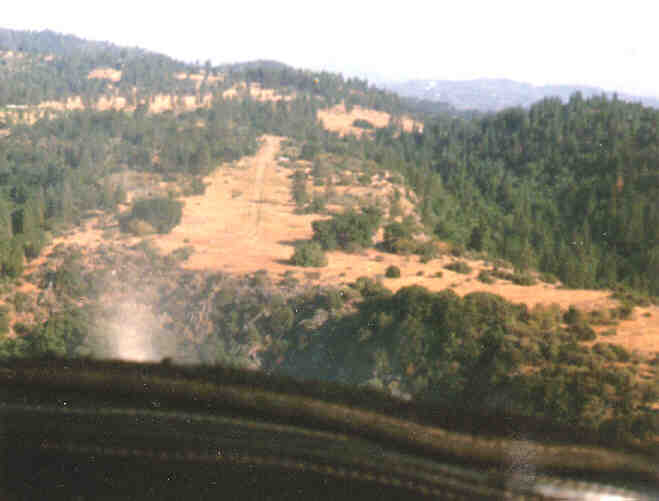
This is also where I learned how to turn around at the end of the runway – in Jerry’s backyard.
Over the years I flew into Jerry and Lucy’s airstrip a few times and it was always a different restored antique car that we or I were picked up in from the tie-down area in the middle of the strip. The last time I was there, Jerry had unfortunately passed away. This is when Lucy gave me the story I told above. Now I don’t know how the story ends – if the airstrip is still there and even if Lucy is still wandering amongst us – probably not because it’s way more than 10 years ago that I was up there last and Lucy was already old then.
Often, when a couple is together so long and happy, the partner left behind often follows rather soon so that they can have new adventures together. If they are together again in the everlasting hunting grounds then I am sure that they fly around in a Luscombe, Bonanza, or maybe in some cute little white space yacht.
